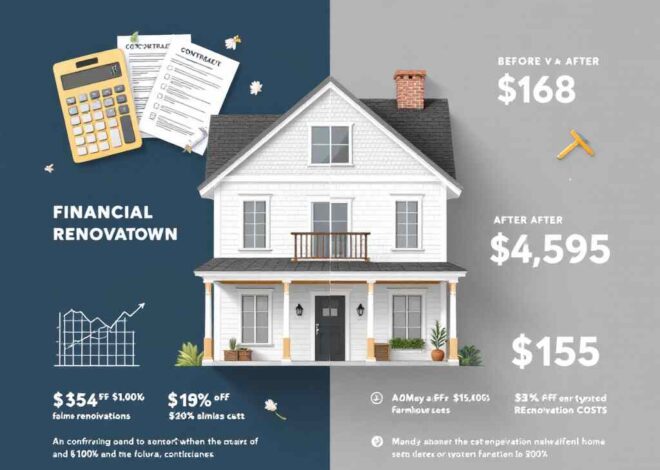
Top Designer Rules You Should Definitely Break
Welcome to our design revolution!
In the world of interior decoration, rules have long dictated how spaces should look and feel. But what if we told you it’s time to break free from those constraints?
In this blog, we’ll explore the liberating power of defying designer norms. From splashing colors in unexpected places to blending textures fearlessly, join us on a journey of creativity and self-expression. It’s time to shake things up and embrace your unique style.
Let’s break some rules together!
Color Freedom: Go Beyond Neutrals
Gone are the days when neutral tones dominated the interior design scene. While neutrals can create a sense of calm and sophistication, they often play it safe, leaving little room for personality to shine through. It’s time to break free from this color confinement and explore the vast spectrum of hues available.
- Embrace Vibrant Colors: Injecting vibrant colors into your space can instantly uplift the mood and add character. Think rich blues, lively yellows, or bold reds. Don’t be afraid to make a statement with a feature wall or a colorful piece of furniture.
- Mix and Match: Who says you have to stick to one color scheme? Experiment with mixing and matching different colors to create a dynamic and visually stimulating environment. Consider complementary or contrasting colors to add depth and interest to your space.
- Accent with Accessories: If painting entire walls in bold colors feels daunting, start small by incorporating colorful accessories such as throw pillows, rugs, artwork, or decorative accents. These pops of color can breathe new life into a neutral space without overwhelming it.
- Consider the Psychology of Color: Keep in mind that colors can evoke different emotions and moods. For example, warm tones like red and orange can create a cozy and inviting atmosphere, while cooler tones like blue and green can promote a sense of calm and tranquility. Choose colors that resonate with the ambiance you want to achieve.
- Be Mindful of Balance: While it’s essential to embrace color, balance is key to preventing visual chaos. Pay attention to the proportions of different colors within your space and ensure that they harmonize well together. Incorporating neutral elements can help anchor vibrant colors and maintain visual equilibrium.
Play with Scale and Proportion
In interior design, scale and proportion are important for creating balanced spaces. But sometimes, sticking too closely to these rules can limit creativity. Let’s break free from the usual guidelines and explore new ways to play with scale and proportion.
- Oversized Statements: Instead of sticking to standard-sized furniture and decor, consider incorporating oversized statement pieces into your space. A large-scale artwork, an oversized mirror, or an imposing piece of furniture can add drama and grandeur, creating a focal point that commands attention.
- Mixing Scale: Don’t feel constrained to stick to one scale throughout your space. Experiment with mixing different scales of furniture and decor to create visual interest and depth. For example, pair a large sectional sofa with delicate accent chairs, or juxtapose a towering floor lamp with petite side tables.
- Proportion Play: While traditional design principles emphasize achieving perfect proportion, breaking the rules allows for more dynamic and unexpected compositions. Consider intentionally skewing proportions to create a sense of whimsy or intrigue. For instance, placing a small coffee table in front of a generously sized sofa can create an intriguing contrast.
- Spatial Awareness: When playing with scale and proportion, it’s essential to consider the spatial context of your environment. Be mindful of the size and proportions of the room, as well as the scale of existing architectural features. Experimentation is encouraged, but ensure that your design choices enhance the overall balance and functionality of the space.
- Visual Illusions: Clever manipulation of scale and proportion can also be used to create optical illusions and alter perceptions of space. For example, using oversized mirrors can make a room appear larger, while strategically placing low-profile furniture can create a sense of openness and airiness.
Creating Depth with Textures
In interior design, texture is frequently underestimated but holds significant potential for enhancing the depth and dimension of a space. While color and furniture choices tend to take precedence in design considerations, integrating diverse textures can transform an ordinary room into something truly remarkable.
Here’s how you can blend textures to imbue your interior design with depth:
- Contrasting Materials: One of the simplest ways to add depth to a room is by mixing contrasting materials. For example, pairing smooth, glossy surfaces with rough, matte textures creates an intriguing visual contrast that draws the eye and adds interest to the space.
- Layering Textiles: Layering textiles is another effective technique for adding depth and richness to a room. Consider layering different fabrics such as wool, linen, cotton, and velvet to create a tactile and visually appealing environment. Mix and match textures to create a cozy and inviting atmosphere.
- Natural Elements: Incorporating natural elements like wood, stone, and leather into your design scheme can also enhance the depth of a space. These materials bring warmth, authenticity, and a sense of connection to the outdoors, adding depth and character to your interior design.
- Play with Pattern: Don’t be afraid to mix patterns and textures to create visual interest. Combining geometric patterns with organic textures or bold prints with subtle textures can add depth and dimension to a room while creating a dynamic and visually stimulating environment.
- Light and Shadow: Texture isn’t just about how something feels; it’s also about how it looks. Pay attention to how different textures interact with light and shadow in your space. Textures that catch and reflect light can create beautiful highlights and shadows, adding depth and dimension to your interior design.
Blend Styles for Eclectic Charm
Eclectic charm in interior design is all about embracing diversity and blending different styles to create a unique and personalized space. Rather than adhering strictly to one design aesthetic, eclectic interiors combine elements from various periods, cultures, and design movements to tell a rich and dynamic story.
Here are some tips for achieving eclectic charm in your home:
- Mix and Match: Don’t be afraid to mix furniture styles, colors, patterns, and textures to create an eclectic look that reflects your personality and interests.
- Find Common Ground: Look for common threads or themes that tie your diverse elements together, whether it’s a shared color palette, a similar material, or a unifying design motif.
- Balance is Key: While eclectic design celebrates diversity, it’s essential to maintain balance and harmony in your space. Keep the overall composition cohesive by balancing contrasting elements with complementary ones.
- Embrace Contrast: Embrace the unexpected by juxtaposing contrasting styles and pieces. For example, pair vintage furniture with modern accents or mix ornate, traditional pieces with sleek, contemporary ones.
- Curate Thoughtfully: Eclectic design is not about clutter or chaos; it’s about curated collections and meaningful displays. Be selective about the items you bring into your space, and let each piece tell its own story.
Design for Functionality, Not Tradition
In today’s fast-paced world, the concept of “traditional” living has evolved to prioritize functionality and practicality over adherence to rigid design conventions. When designing your home, it’s essential to prioritize your lifestyle and needs above all else.
- Assess Your Needs: Before diving into the design process, take stock of your daily routines, habits, and activities. Identify what functions are essential to you and your family’s lifestyle.
- Multifunctional Spaces: Maximize the use of your space by incorporating multifunctional furniture and design solutions. For example, opt for a sofa bed or a dining table with storage compartments to maximize space in smaller homes.
- Streamline Your Design: Keep your design clean, clutter-free, and organized to promote a sense of calm and efficiency. Invest in smart storage solutions to keep belongings out of sight and easily accessible when needed.
- Flexible Design Elements: Design your space with flexibility in mind to accommodate changing needs and preferences over time. Choose modular furniture that can be easily rearranged or repurposed to adapt to evolving lifestyles.
- Personalize Your Space: While functionality is crucial, don’t forget to infuse your space with personality and style. Design your home to reflect your tastes, interests, and values, creating a space that feels uniquely yours.
Get Creative with Lighting
Lighting plays a crucial role in setting the mood and atmosphere of a space, yet it’s often overlooked in interior design. Instead of relying solely on overhead fixtures or traditional lamps, why not get creative with lighting?
- Statement Fixtures: Make a bold statement with oversized or eye-catching light fixtures that serve as focal points in your space. Whether it’s a sculptural pendant light or a dramatic chandelier, choose lighting that adds visual interest and personality to your room.
- Layered Lighting: Create depth and dimension by layering different types of lighting, such as ambient, task, and accent lighting. Mix overhead fixtures with floor lamps, table lamps, and wall sconces to achieve a balanced and dynamic lighting scheme.
- Play with Color: Explore the use of colored lighting to add drama and ambiance to your space. LED bulbs come in a variety of hues, allowing you to change the color of your lighting to suit your mood or the occasion.
- Highlight Architectural Features: Use lighting to highlight architectural features such as exposed beams, textured walls, or artwork. Directional lighting can draw attention to these elements and enhance the overall aesthetic of your space.
- Outdoor Lighting: Extend your design creativity to outdoor spaces by incorporating innovative lighting solutions. From string lights and lanterns to solar-powered fixtures and LED landscaping lights, there are plenty of options to illuminate and enhance your outdoor living areas.
Maximalism: Embrace Complexity
In contrast to the minimalist trend that has dominated interior design in recent years, maximalism celebrates abundance, opulence, and complexity. Instead of adhering to strict rules of simplicity and restraint, maximalist interiors embrace bold colors, patterns, textures, and accessories to create visually rich and layered spaces.
- More is More: Don’t be afraid to layer patterns, textures, and colors to create a visually dynamic and stimulating environment. Mix and match bold prints, rich textures, and vibrant hues to create a sense of drama and opulence.
- Curate Collections: Maximalism is not about clutter; it’s about curated collections and meaningful displays. Showcase your favorite artworks, collectibles, and souvenirs to add personality and character to your space.
- Play with Scale: Experiment with different scales of furniture, artwork, and accessories to create visual interest and depth. Incorporate oversized statement pieces alongside smaller accents to create a sense of grandeur and intimacy.
- Embrace Eclecticism: Maximalism is all about mixing styles, periods, and influences to create a one-of-a-kind aesthetic. Don’t be afraid to blend traditional and modern elements, vintage and contemporary pieces, and cultural influences from around the world.
- Make a Statement: Maximalist interiors are bold, expressive, and unapologetic. Make a statement with bold colors, extravagant furnishings, and eye-catching accessories that reflect your personality and style.
Make it Personal, Forget Trends
In a world obsessed with fleeting trends and Instagram-worthy aesthetics, it’s easy to lose sight of what truly matters in interior design: creating a home that reflects your unique personality, interests, and experiences. Instead of chasing the latest trends, why not focus on making your space truly personal and meaningful?
- Tell Your Story: Your home should tell the story of who you are and what you love. Incorporate personal mementos, family heirlooms, and cherished souvenirs into your decor to add warmth and personality to your space.
- Follow Your Heart: Don’t feel pressured to adhere to a specific design style or trend if it doesn’t resonate with you. Trust your instincts and follow your heart when making design decisions that reflect your personal tastes and preferences.
- Create Moments: Design your space to evoke emotions and memories by creating moments that are meaningful to you. Whether it’s a cozy reading nook, a gallery wall of family photos, or a dedicated space for your hobbies and interests, prioritize the things that bring you joy and fulfillment.
- Embrace Imperfection: Perfection is overrated. Embrace the quirks, imperfections, and idiosyncrasies that make your home uniquely yours. Let go of the pressure to achieve a flawless, magazine-worthy aesthetic and focus instead on creating a space that feels lived-in, loved, and authentic.
- Design for Longevity: Instead of chasing trends that come and go, invest in timeless pieces and design elements that will stand the test of time. Choose quality over quantity and prioritize sustainability and durability in your design choices.
Stepping outside the box offers countless chances to create spaces that truly reflect your style. By daring to be different and letting your creativity shine, you can design a home that feels uniquely you. Whether you’re trying out bold colors, playing with different sizes, or mixing styles, design with joy and passion.
Your home is your personal canvas – make it a place that tells your story. Happy decorating!


